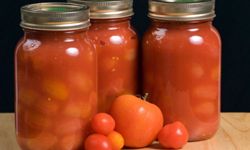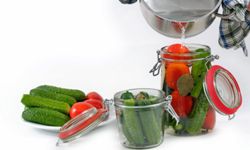Growing tomatoes at home is easy for even novice gardeners. As long as you have a small area to set up shop (as small as an apartment stoop), you can grow these juicy and delicious vegetables. The only problem is, sometimes they yield a lot more than you expected and you end up with way more than you can eat. If after you've given away some tomatoes to friends and family you find that you still have some left over, there are options other than the compost pile. One of these is canning, which is a lot easier than it sounds. With just a little effort, you'll be able to enjoy those vine-ripe tomatoes year-round.
Advertisement


